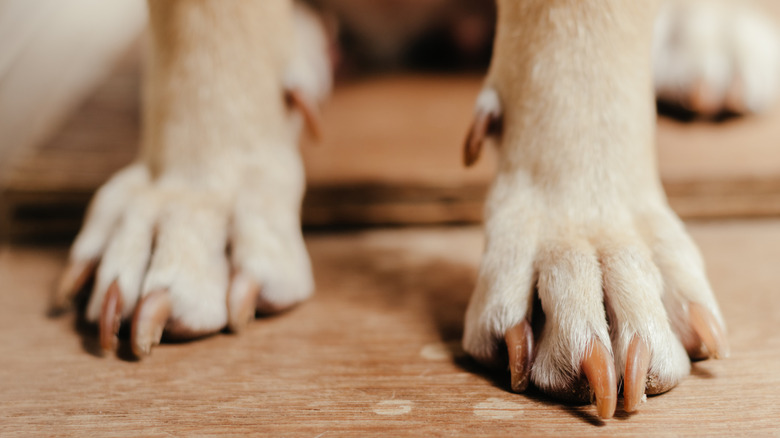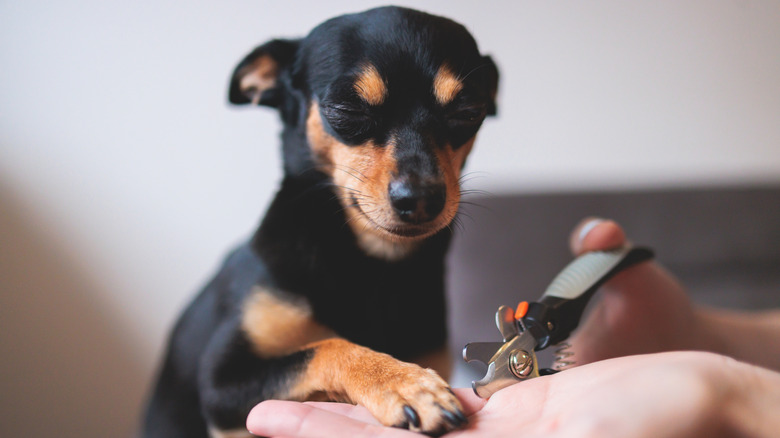What Is A Quicked Nail (& Why Do You Need To Watch For Them After Your Dog Is Groomed)?
We may receive a commission on purchases made from links.
When cutting your own nails, it's easy to determine the ideal place to clip them since they're white or clear. However, cutting a dog's nails is usually more challenging because many of them are not as transparent. The clearer the nails, the easier it is to see the quick. The quick is the blood-supplying portion of the nail, or the cuticle, that nourishes the tissue. Cutting the quick — referred to as a quicked nail — can cause bleeding, which can be uncomfortable or even painful for a dog. This is why it's so important to ensure that this portion of the nail is left intact.
Cutting a dog's nail too short is one of the most common grooming injuries, even among professional groomers. In addition to the unpleasant physical repercussions, it can traumatize your dog to the point that they will become fearful of the nail clippers, the groomer, or the entire grooming salon. This post-traumatic stress can prevent them from cooperating during the next nail trim.
You, or your groomer, can prevent cutting the quick by clipping only a small portion of each nail at a time. After each trim, look at the bottom of the nail to determine if you can safely cut more. The quick will appear in the center as a dark spot. If the clipped nail is a white-gray color, you can continue clipping. If you see a dark spot, it's time to stop. You can also consider shortening your dog's nails without using clippers at all.
What to do if your dog has a quicked nail
If you clip your dog's quick, the first thing you'll want to do is stop the bleeding. You may notice only a dot of blood on the nail, but not enough to continuously drip out. This likely means that you've cut only a miniscule portion of the quick. If you cut a larger amount, you'll notice more blood. Regardless of how much blood you see, take some paper towels or tissue and apply pressure to the nail for a few minutes, or however long it takes to stop the bleeding.
Next, apply a small amount of a clotting powder to the wound to help the blood clot, such as Miracle Care Kwik Styptic Powder. This can also be used as a first-aid treatment for broken dog nails. If you don't have any styptic powder, you can use cornstarch, baking soda, or flour instead. If you're unable to control the bleeding before applying the powder, or if the nail starts bleeding again after applying the powder, call your veterinarian.
Most quicked nails heal on their own, but keep an eye on your dog's nail daily until it heals completely to ensure there are no signs of infection. If you notice pus, redness, or swelling, or if your dog starts licking their foot, limping, or acting like they're in pain, this is another reason to contact your veterinarian.

